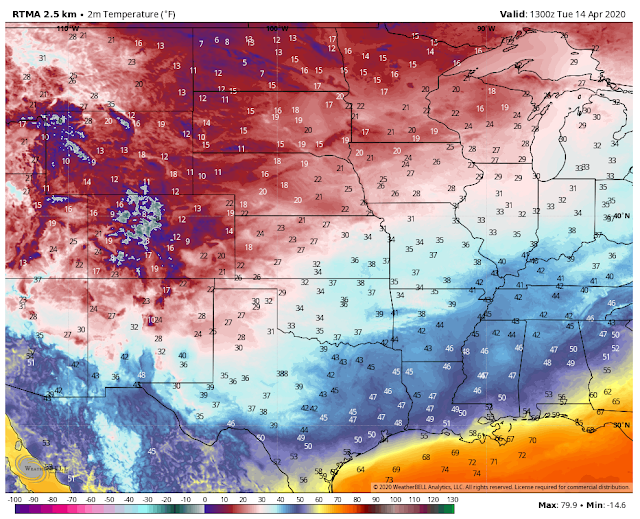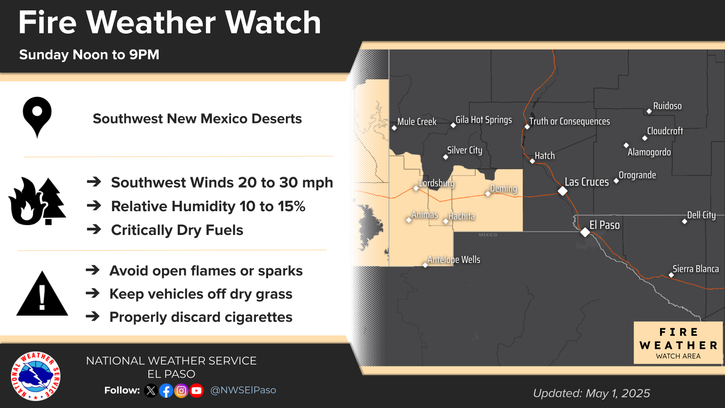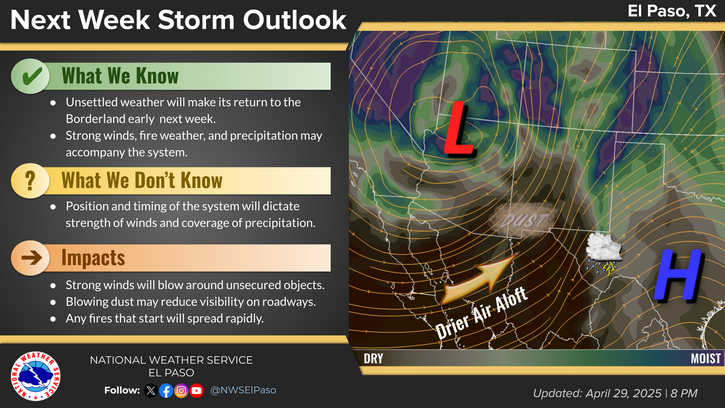Why Does COVID-19 Sound Familiar?
Is history in the process of repeating itself?
I believe it is. We've seen this movie before but none of us (including me or
anyone I know) was alive to see the original. We are however living the
nightmare of the sequel.
Comparing The Spanish Flu Pandemic Of 1918
& COVID-19 Now.
The 1918 influenza pandemic (nicknamed the
Spanish Flu) was the most severe pandemic in recent history. It was caused by
an H1N1 virus with genes of avian origin (bird flu). Although there is no
universal consensus regarding where the virus originated, it spread worldwide
from 1918-1919.
As my wife has pointed out isn't it odd that
many of these flu outbreaks originate in China?
The 1918 flu was first observed in Europe, the
United States, and parts of Asia before swiftly spreading around the world.
Many believe that soldiers in Europe fanning out across the world during World
War I spread the virus far and wide. Round one in the spring of 1918 was
severely mild compared to the second wave beginning in the summer of 1918 and
lasting into February of 1919.
Scientists still do not know for sure where
the Spanish Flu originated, though theories point to France, China, Britain, or
the United States, where the first known case was reported at Camp Funston in
Fort Riley, Kansas, on March 11, 1918.
It is estimated that about 500 million people
or one-third of the world’s population became infected with this virus. The
number of deaths was estimated to be at least 50 to 100 million worldwide with
about 675,000 occurring in the United States.
Mortality was high in people younger than 5
years old, 20-40 years old, and 65 years and older. The high mortality in
healthy people, including those in the 20-40 year age group, was a unique
feature of this pandemic.
One unusual aspect of the 1918 flu was that it
struck down many previously healthy, young people—a group normally resistant to
this type of infectious illness—including a number of World War I servicemen.
In fact, more U.S. soldiers died from the 1918
flu than were killed in battle during the war. Forty percent of the U.S. Navy
was hit with the flu, while 36 percent of the Army became ill, and troops
moving around the world in crowded ships and trains helped to spread the killer
virus.
Although the death toll attributed to the
Spanish flu is often estimated at 20 million to 50 million victims worldwide,
other estimates run as high as 100 million victims—around 3 percent of the
world’s population. The exact numbers are impossible to know due to a lack of
medical record-keeping in many places.
With no vaccine to protect against influenza
infection and no antibiotics to treat secondary bacterial infections that can
be associated with influenza infections, control efforts worldwide were limited
to non-pharmaceutical interventions such as isolation, quarantine, good
personal hygiene, use of disinfectants, and limitations of public gatherings,
which were applied unevenly. Some cities, states, and regions shut down while
others didn't.
Complicating matters was the fact that World
War I had left parts of America with a shortage of physicians and other health
workers. And of the available medical personnel in the U.S., many came down
with the flu themselves. Many hospitals then as now were overrun with patients.
While others in rural areas were hit less severely.
Additionally, hospitals in some areas were so
overloaded with flu patients that schools, private homes, and other buildings
had to be converted into makeshift hospitals, some of which were staffed by
medical students.
Officials in some communities imposed quarantines,
ordered citizens to wear masks, and shut down public places, including schools,
churches, and theaters. People were advised to avoid shaking hands and to stay
indoors, libraries put a halt on lending books, and regulations were passed
banning spitting.
With no cure for the flu, many doctors
prescribed medication that they felt would alleviate symptoms… including
aspirin, which had been trademarked by Bayer in 1899—a patent that expired in
1917, meaning new companies were able to produce the drug during the Spanish
Flu epidemic.
Before the spike in deaths attributed to the
Spanish Flu in 1918, the U.S. Surgeon General, Navy, and the Journal of the
American Medical Association had all recommended the use of aspirin. Medical
professionals advised patients to take up to 30 grams per day, a dose now known
to be toxic. (For comparison’s sake, the medical consensus today is that doses
above four grams are unsafe.) Symptoms of aspirin poisoning include
hyperventilation and pulmonary edema, or the buildup of fluid in the lungs, and
it’s now believed that many of the October deaths were actually caused or
hastened by aspirin poisoning.
The flu took a heavy human toll, wiping out
entire families and leaving countless widows and orphans in its wake. Funeral parlors
were overwhelmed and bodies piled up. Many people had to dig graves for their
own family members.
The flu was also detrimental to the economy.
In the United States, businesses were forced to shut down because so many
employees were sick. Basic services such as mail delivery and garbage
collection were hindered due to flu-stricken workers.
In some places, there weren’t enough farm
workers to harvest crops. Even state and local health departments closed for
business, hampering efforts to chronicle the spread of the 1918 flu and provide
the public with answers about it. Communication then was not like it is now.
Then it took days or weeks for the news to spread across the world. They
suffered from a lack of good efficient communication.
A devastating second wave of the Spanish Flu
hit American shores in the summer of 1918, as returning soldiers infected with
the disease spread it to the general population—especially in densely-crowded
cities. Without a vaccine or approved treatment plan, it fell to local mayors
and healthy officials to improvise plans to safeguard the safety of their
citizens. With pressure to appear patriotic at wartime and with a censored
media downplaying the disease’s spread, many made tragic decisions.
Philadelphia’s response was too little, too
late. Dr. Wilmer Krusen, director of Public Health and Charities for the city,
insisted mounting fatalities were not the “Spanish flu,” but rather just the
normal flu. So on September 28, the city went forward with a Liberty Loan
parade attended by tens of thousands of Philadelphians, spreading the disease
like wildfire. In just 10 days, over 1,000 Philadelphians were dead, with
another 200,000 sick. Only then did the city close saloons and theaters. By
March 1919, over 15,000 citizens of Philadelphia had lost their lives.
St. Louis, Missouri, was different: Schools
and movie theaters closed and public gatherings were banned. Consequently, the
peak mortality rate in St. Louis was just one-eighth of Philadelphia’s death
rate during the peak of the pandemic.
Citizens in San Francisco were fined $5—a
significant sum at the time—if they were caught in public without masks and
charged with disturbing the peace.
Interestingly enough today we face nearly the
same challenges world-wide with trying to come up with a valid number of infections
from COVID-19. Bad testing and faulty tests initially and lack of testing have
compounded this ongoing problem. Not to mention that Communist China, North
Korea, Iran, Russia, and others are lying about their numbers.
Today because of the Political bias of the
Mainstream Media and the control over Social Media we suffer from a lack of the
truth.
During the fall of 1918, a much deadlier
second wave spread across America and the rest of the world. In November of
1918, it is reported that people in the U.S. would wake up feeling sick but
would go ahead and go to work. Many of them died before arriving. Many people
would die within two hours of becoming infected with the Spanish Flu virus.
Victims had blood pouring out of their ears, noses, coughing up blood as they
drowned in their own phlegm and blood. They literally would drop dead in the
streets. Turning blue and purple.
When the Spanish flu first appeared in early
March 1918, it had all the hallmarks of a seasonal flu, albeit a highly
contagious and virulent strain. One of the first registered cases was Albert
Gitchell, a U.S. Army cook at Camp Funston in Kansas, who was hospitalized with
a 104-degree fever. The virus spread quickly through the Army installation,
home to 54,000 troops. By the end of the month, 1,100 troops had been
hospitalized and 38 had died after developing pneumonia.
Luckily, the first wave of the virus wasn’t
particularly deadly, with symptoms like high fever and malaise usually lasting
only three days, and mortality rates were similar to seasonal flu.
Reported cases of Spanish flu dropped off over
the summer of 1918, and there was hope at the beginning of August that the
virus had run its course. In retrospect, it was only the calm before the storm.
Somewhere in Europe, a mutated strain of the Spanish flu virus had emerged that
had the power to kill a perfectly healthy young man or woman within 24 hours of
showing the first signs of infection.
From September through November of 1918, the
death rate from the Spanish flu skyrocketed. In the United States alone,
195,000 Americans died from the Spanish flu in just the month of October.
And unlike a normal seasonal flu, which mostly
claims victims among the very young and very old, the second wave of the
Spanish flu exhibited what’s called a “W curve”—high numbers of deaths among
the young and old, but also a huge spike in the middle composed of otherwise
healthy 25- to 35-year-olds in the prime of their life.
Not only was it shocking that healthy young
men and women were dying by the millions worldwide, but it was also how they
were dying. Struck with blistering fevers, nasal hemorrhaging and pneumonia,
the patients would drown in their own fluid-filled lungs.
British military doctors conducting autopsies
on soldiers killed by this second wave of the Spanish flu described the heavy
damage to the lungs as akin to the effects of chemical warfare.
Like COVID-19 now most victims of the Spanish
Flu died when their lungs filled up with fluids, they drowned on their own body
fluids.
The rapid spread of Spanish flu in the fall of
1918 was at least partially to blame on public health officials unwilling to
impose quarantines during wartime. In Britain, for example, a government
official named Arthur Newsholme knew full well that a strict civilian lockdown
was the best way to fight the spread of the highly contagious disease. But he
wouldn’t risk crippling the war effort by keeping munitions factory workers and
other civilians home.
Initial symptoms of the illness included a
sore head and tiredness, followed by a dry, hacking cough; a loss of appetite;
stomach problems; and then, on the second day, excessive sweating. Next, the
illness could affect the respiratory organs, and pneumonia could develop.
Americans were offered similar advice about
how to avoid getting infected. They were advised not to shake hands with
others, to stay indoors, to avoid touching library books, and to wear masks.
Schools, theaters, businesses closed nationwide.
Sound familiar? Local, state, and Federal
government officials reacted the same way then to the virus as they are today
with COVID-19. They shut everything down and ordered people to stay home to
stem the spread of the virus. This wrecked the economies of the U.S. and the
world.
The virus continued to run its course until
1921. Medical researches say that the virus was still traceable as the Spanish
Flu as late as 1957. It’s believed that today's annual flu outbreaks are direct
descendants (in a much-weakened form) of the Spanish Flu. The virus mutated and
adapted itself to its host...us. Although the Spanish Flu weekend with each new
mutation over time we still to this day deal with it.
Reality In Today's Pandemic.
America and the world now grapple with the
cruel decisions of how to stop the spread of COVID-19, and how to prevent a
second, possibly deadlier wave this fall. We also face the agonizing heartbreak
of trying to save our livelihoods/jobs, economy, and nation without killing
ourselves during this Pandemic.
As of today (Sunday, April 26th,2020) there
are 2,962,915 reported cases of COVID-19 worldwide as per the John Hopkins web site. Which is likely low due to
the lack of accurate reporting from the Communist Nations mentioned above.
205,936 deaths world-wide...also likely low.
961,969 cases in the U.S. with 54,530 deaths.
The current population of the U.S. is
328,200,000.
Only 5,184,635 tests have been administered
nation-wide. That's less than 10% of the entire nation that has been tested.
There are no easy solutions. There are no easy
answers. This isn't going to get any easier or get any better anytime soon. My
worst fear is that we haven't seen the worst of this.
Equally as dangerous as the virus itself is
the Radical Political Left who have gone on a feeding frenzy in trampling on
States Rights and our basic Constitutional Rights. Political unrest, economic
disparity, and fear all could combine as a deadly combination with the virus to
take many more lives.
Both have the possibility of killing many more
of us if this does not calm down soon.
Pray for America. Pray for the World.
































